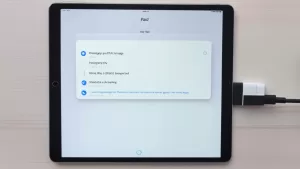Overheating problems in mobile devices are usually attributed to hardware damage like a bad battery or liquid damaged components. In other cases, software-related issues are to blame. Among the usual triggers are bad apps, update bugs, and misconfigured settings on the phone. This post highlights some helpful procedures that will help you rule out software-related factors that caused an iPhone XS to overheat. Before rushing to a service center, I suggest that you should try performing the given solutions to fix overheating problem on your iPhone XS.
Before anything else, if you are looking for a solution to a different problem, then drop in on our iPhone XS Help Guides page for we have already solved some of the most common problems with this device. Try to find issues that are similar with yours and feel free to use our workarounds and solutions.
Troubleshooting iPhone XS that’s overheating
It is normal for your iPhone to become warmer while charging, installing big apps, updating software, and after prolonged or extensive usage. Under normal circumstances, the device should go back to its normal operating temperature after giving it enough time to cool down.
Otherwise, try these subsequent solutions to rule out other factors.
First solution: Close all background apps on your iPhone XS.
Not only that the apps become rogue when left running in the background, but also consumed huge battery life resulting for the phone to become warmer. When the processor and the battery become exhausted, it generates heat on your phone. Thus, closing all the background apps will rectify the overheating issue. Here’s how you do it:
- From the Home screen, swipe your finger upward and then pause in the middle.
- Then swipe either right or left to navigate through the apps preview.
- Swipe up on the app’s preview to close individual background apps.
- If multiple apps are running in the background, follow the same steps to clear them all out.
Once you have closed all the background apps, use your iPhone as you normally do and see if it is still overheating. Proceed to the next applicable solutions if it does.
ALSO READ: How to fix Apple iPhone XS Twitter app that keeps crashing
Second solution: Force restart (hard reset) your iPhone XS.
Aside from soft reset, you can resort to a forced restart. Doing so abruptly kills all background apps and processes including corrupted services that trigger the processor to because exhausted and your iPhone to overheat. This process won’t affect any saved files on your phone’s internal storage and so you don’t need to back up your files beforehand. Here’s how it’s done:
- Press and quickly release the Volume Up button.
- Press and quickly release the Volume Down button.
- Then, press and hold the Side/Power button and then release when the Apple logo appears.
A forced restart is an effective solution to unresponsive apps on your phone. And similar to a soft reset, it also clears out random firmware crashes that caused the system to act up.
Third solution: Disable and uninstall flawed/problematic apps from your iPhone XS.
If the overheating issue occurs after you installed an app on your phone, then it is very likely that the said app causes the problem. To verify whether that app is indeed causing your iPhone to overheat, temporarily disable the app by enabling restrictions. Here’s how:
- From the Home screen, go to Settings.
- Select Screen Time.
- Then tap Content & Privacy Restrictions.
- Enter your device passcode when prompted.
- Tap the switch next to Content & Privacy.
- Then tap Allowed apps.
- Search the suspected app and then tap the switch next to it to disable the app.
After the app has been disabled, use your phone and see if the overheating issue has been remedied.
If you had confirmed that the overheating problem is triggered by an application, you can uninstall the app to put an end to the problem. Here’s how it’s done:
- From the Home screen, locate the app that needs to be deleted.
- Then tap and hold on the icon of the app until it starts wiggling.
- Next, tap the X sign on the top-left corner of the app icon.
- Finally, tap Delete to confirm that you want to uninstall the application from your phone.
After you have successfully uninstalled the bad app, restart (soft reset) your phone to dump junk files from its cache and to refresh its operating system.
ALSO READ: How to fix Apple iPhone XS Twitter app that keeps crashing
Fourth solution: Reset all settings on your iPhone XS.
Being able to customize your iPhone settings is indeed favourable as you can set the phone based on your preference. However, doing so may also cause adverse results especially when invalid configuration settings had been applied. If the overheating problem occurs after making changes to your phone settings, then it is best to change or revert them back to their previous configurations. If it’s not possible for you to determine which value exactly needs to be changed, then it would be better to reset all settings on your iPhone. This process won’t delete any saved data on your phone’s internal memory and so it won’t cause permanent data loss. What is eradicates are only those customized settings on the phone. Here’s how to reset all settings on your iPhone XS:
- From the Home screen, go to Settings.
- Select General.
- Scroll down to and select Reset.
- Then tap the Reset all settings option.
- Enter your device passcode when prompted.
- Then tap the option to confirm the reset.
Your phone will reboot by itself when the reset is finished and then loads up the default settings and original values on your phone. After it boots up, use your phone as usual and see if it is still overheating or not anymore.
Fifth solution: Check and install latest iOS version for your iPhone XS.
Malicious software and system bugs are also among other possible triggers. And this is when installing iOS updates play a vital role. Being said, check for available updates and if there is, update your iPhone to the iOS version. Here’s how to check and install available iOS update on your iPhone XS:
- From the Home screen, go to Settings.
- Select General.
- Tap Software Update.
- If an update is available, follow the onscreen prompts to Download and Install the iOS update.
Carrying out this process will require you an excellent internet connection, sufficient storage to save the update file, and at least 50 percent battery life on your device.
Be sure to back up all your important files before updating to avoid losing important contents whenever things go wrong during the update.
Once the update is finished, reboot your iPhone to apply the recent system changes and to implement the embedded fixes. Then use your iPhone as you normally do to test and see if it’s still overheating or not.
If nothing else works and your iPhone XS is still overheating, take it the nearest Apple service center so that a technician can look into it and fix whatever hardware damage it has. Should you wish to avail for warranty, talk to your carrier to verify if your device is covered or eligible for warranty, either for service or new unit replacement.
Connect with us
We are committed to helping our readers fix the problems with their phones as well as learn how to properly use their devices. So, if you have other issues, you may visit our Help Guides page so you can check by yourself the articles we’ve already published that contain solutions to common problems. Also, we do create videos to demonstrate how things are done on your phone. Visit our Youtube Channel and please subscribe to it. Thanks.
RELEVANT POSTS:







